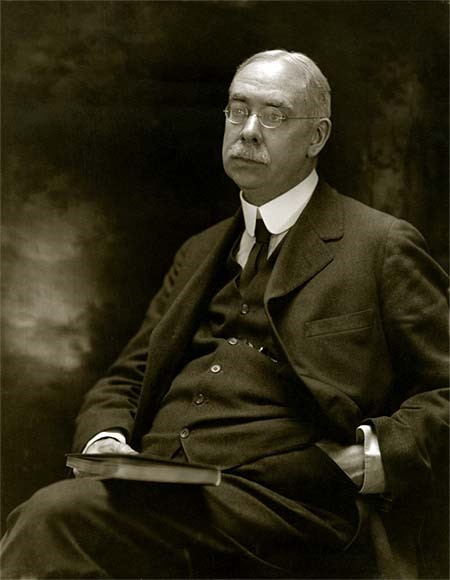In the summer of 1893, when Chicago had many out-of-town and international visitors attending the World's Columbian Exposition, Dr. Martin invited Dr. Matas and a number of the most distinguished medical teachers of America and Europe to give a course of lectures that would promote the reputation of the Post-Graduate School. This school was the birthplace of the idea of the Clinical Congress of Surgeons.
Dr. Matas was known as a pioneer in both spinal and local anesthesia and was the developer of the intravenous drip. He was hailed by William Osler as the "Father of Vascular Surgery" and was the recipient of a long list of honorary degrees and awards, local, national, and international.
He was an innovator from a very early age. During a 1953 interview by Greer Williams, ACS Director of Public Relations, Dr. Matas spoke of Scarpa's Law—that no aneurysm could be cured without destroying the blood-carrying portion of the artery—and how in 1888 he disproved this "Law" by inventing a procedure he called endoaneurysmorrhaphy, which obliterated the aneurysm without interfering with the blood stream. Thus, he saved the patient's arm by saving the arteries and not injuring the nerves.
Dr. Matas was a surgical teacher of great vision and imagination. In 1912, when motion picture films were in their infancy, he extolled their potential as an educational tool for physicians. As part of his address as president of the Southern Surgical and Gynecological Association, he illustrated this idea by showing a remarkable collection of short films including some of operative procedures produced by Dr. E. Doyen of Paris.
Dr. Matas was among the founders who met in May 1913 to organize the American College of Surgeons and he was elected as one of its two vice-presidents. (The other was Dr. Walter W. Chipman of Montreal.) The Board of Regents of the newly formed College was planning its first convocation to be held in November of that same year. Dr. Franklin Martin writes this about the event: "I had tentatively broached the subject of an academic gown to be worn at our Convocations ... and Dr. Matas, usually politeness itself, was almost ruthless in his criticism." Nevertheless, when the proposed academic dress was modeled at the next meeting, none of the Regents protested. "The gowns sold themselves," Martin wrote, "the critical, conservative audience gave immediate and vociferous approval, and the academic costume was adopted for use ..."
Dr. Matas was named President-Elect of the American College of Surgeons at the 1924 Clinical Congress, and was inaugurated a year later, succeeding Charles Mayo, MD, FACS. He subsequently served as ACS President during 1926. The illustration that accompanies this article shows an oil portrait of Dr. Matas wearing his presidential robes.
In January 1940, at an ACS Sectional Meeting held in New Orleans, a testimonial dinner was given to honor Dr. Matas. In his opening remarks Isidore Cohn, MD, FACS, said that "Dr. Matas has been like a blazing star which has vitalized by radiant energy medical progress, and illumined by his surgical knowledge the pages of medical history during the past sixty years."
References
- Grimm, EK. Basic Material for the History of the American College of Surgeons, notebooks compiled 1953-1957 (includes oral history interview with Dr. Matas)
- Stephenson, GW. American College of Surgeons at 75, Chicago: American College of Surgeons, 1990.
- Cohn, I. Rudolph Matas: A Biography of One of the Great Pioneers in Surgery. Garden City, N.Y.: Doubleday & Co., 1960.
- Martin, FH. The Joy of Living. 2 vols. Garden City, N.Y.: Doubleday, Doran & Co., 1933.
- "Testimonial Dinner Tendered to Dr. Rudolph Matas." Bulletin of the American College of Surgeons, 25:3, June 1940, 157-171.
ACS Archives Highlights is a series showcasing the vibrant history of the American College of Surgeons, its members, and the history of surgery. For further information on our featured highlights, search the Archives Catalog or contact the ACS Archivist.











